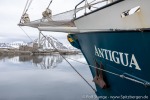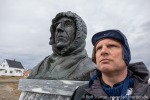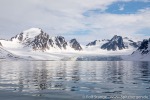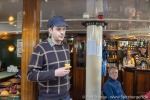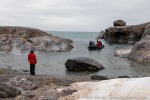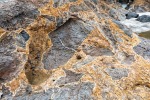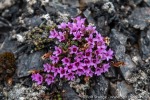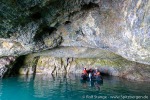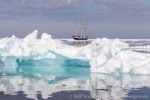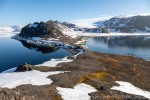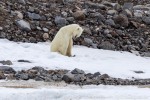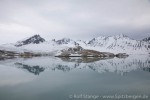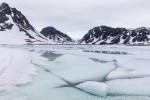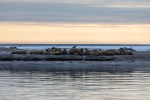-
current
recommendations- Liefdefjord
New page dedicated to one of Spitsbergen's most beautiful fjords. Background information and many photos.
- New Spitsbergen guidebook
The new edition of my Spitsbergen guidebook is out and available now!
- Liefdefjord
New page dedicated to one of Spitsbergen's most beautiful fjords. Background information and many photos.
Page Structure
-
Spitsbergen-News
- Select Month
- April 2025
- March 2025
- February 2025
- January 2025
- December 2024
- November 2024
- October 2024
- September 2024
- August 2024
- July 2024
- June 2024
- May 2024
- April 2024
- March 2024
- February 2024
- January 2024
- December 2023
- November 2023
- October 2023
- September 2023
- August 2023
- July 2023
- June 2023
- May 2023
- April 2023
- March 2023
- February 2023
- January 2023
- December 2022
- November 2022
- October 2022
- September 2022
- August 2022
- July 2022
- June 2022
- May 2022
- April 2022
- March 2022
- February 2022
- January 2022
- December 2021
- November 2021
- October 2021
- September 2021
- August 2021
- July 2021
- June 2021
- May 2021
- April 2021
- March 2021
- February 2021
- January 2021
- December 2020
- November 2020
- October 2020
- September 2020
- August 2020
- July 2020
- June 2020
- May 2020
- April 2020
- March 2020
- February 2020
- January 2020
- December 2019
- November 2019
- October 2019
- September 2019
- August 2019
- July 2019
- June 2019
- May 2019
- April 2019
- March 2019
- February 2019
- January 2019
- December 2018
- November 2018
- October 2018
- September 2018
- August 2018
- July 2018
- June 2018
- May 2018
- April 2018
- March 2018
- February 2018
- January 2018
- December 2017
- November 2017
- October 2017
- September 2017
- August 2017
- July 2017
- June 2017
- May 2017
- April 2017
- March 2017
- February 2017
- January 2017
- December 2016
- November 2016
- October 2016
- September 2016
- August 2016
- July 2016
- June 2016
- May 2016
- April 2016
- March 2016
- February 2016
- January 2016
- December 2015
- November 2015
- October 2015
- September 2015
- August 2015
- July 2015
- June 2015
- May 2015
- April 2015
- March 2015
- February 2015
- January 2015
- December 2014
- November 2014
- October 2014
- September 2014
- August 2014
- July 2014
- June 2014
- May 2014
- April 2014
- March 2014
- February 2014
- January 2014
- December 2013
- November 2013
- October 2013
- September 2013
- August 2013
- July 2013
- June 2013
- May 2013
- April 2013
- March 2013
- February 2013
- January 2013
- December 2012
- November 2012
- October 2012
- September 2012
- August 2012
- July 2012
- June 2012
- May 2012
- April 2012
- March 2012
- February 2012
- January 2012
- December 2011
- November 2011
- October 2011
- September 2011
- August 2011
- May 2011
- April 2011
- March 2011
- February 2011
- January 2011
- December 2010
- November 2010
- September 2010
- August 2010
- July 2010
- June 2010
- May 2010
- April 2010
- March 2010
- February 2010
- November 2009
- October 2009
- August 2009
- July 2009
- June 2009
- May 2009
- April 2009
- March 2009
- February 2009
- January 2009
- December 2008
- November 2008
- October 2008
- August 2008
- July 2008
- June 2008
- May 2008
- April 2008
- March 2008
- February 2008
- April 2000
- Select Month
-
weather information
-
Newsletter

| Guidebook: Spitsbergen-Svalbard |
Home → June, 2022
Monthly Archives: June 2022 − News & Stories
Bird flu detected in Spitsbergen
Bird flu, also known as avian flu or avian influenza, has been detected in Spitsbergen in June for the first time. It is the first evidence for this virus in the Arctic.
Scientists expected the arrival of the bird flu virus in Svalbard now because of a major recent outbreak of the disease amonst Barnacle geese in England and Scotland. Birds from this population migrate up to Svalbard to breed there during the summer. You can see Barnacle geese and others, mainly pink-footed geese, in and near Longyearbyen in large numbers in the early summer before they spread to the breading areas.

Barnacle geese are potential carriers of the bird flu virus (here in Ny-Ålesund).
The bird flu virus was now found in a dead glaucous gull that was found near the harbour in Longyearbyen, as NRK reports.
Bird flu is highly infectious and very dangerous for birds, both wild and domestic ones. Experts fear potentially disastrous consequences for domestic bird stocks in mainland Norway and wild bird populations both there and in Svalbard.
Report to the Sysselmester if you find a dead bird or an alive one that shows strange behaviour, but do not touch or handle dead birds or bird droppings. The risk of an infection for humans, however, is described as low.
Norwegian government dispossesses foreigners of local voting rights
After a long and controversial political process, the Norwegian government in Oslo has now made the decision that non-Norwegian inhabitants of Longyearbyen will lose the voting right (active and passive) on a community level. Only those “foreigners” (people without Norwegian passports) who have lived at least 3 years in a mainland community will be able to vote or to be elected into the community council (Longyearbyen Lokalstyre).
This applies to approximately 700 inhabitants of Longyearbyen. There is currently one member of Lokalstyre who has a passport other than Norwegian (Olivia Ericson from Sweden), according to NRK.
This had been a very controversial and, for some, emotional debate which was already subject of several earlier contributions on this page; read the previous article (click here) for more background, e.g. on the history of local democracy in Longyearbyen.
It is safe to assume that most non-Norwegian citizens have not spent 3 years as a registered inhabitant of a Norwegian mainland community. Many locals who have spent a major part of their lives in Longyearbyen will not be allowed to vote during the next local elections (in 2023) and they may not be elected into Lokalstyre.
The recent governmental decision frustrates many who are concerned; many feel like second-class citizens now, as Svalbardposten reports.
Minister of justice Emilie Enger Mehl gives the following explanatory statement (quoted from the press release of the Norwegian government, link above, my own translation): “The connection to the mainland makes sure that those who manage the community at any time have good knowledge and a good understanding of Svalbard politics and the (political) framework that is applied to Svalbard … considerable resources are transferred every year from the mainland to support public services and infrastructure. Inhabitants with mainland connection will often have contributed to these finances. The requirement for a mainland connection is also to be seen in this light.”

Longyearbyen is becoming more Norwegian. Exclusion of non-Norwegian inhabitants from local democracy is a price that the Norwegian government is appearently willing to pay.
Comment
So far so clear: those who (potentially) have paid are to decide; those who have paid potentially less (local taxes are low) and to not have the right passport are excluded from political participation where it really matters.
Longyearbyen Lokalstyre is a community council and no more than that. Lokalstyre’s decisions concern local traffic, kindergarten, school, other local infrastructure – just what a community council generally does, and no more than that. Lokalstyre does not have any influence in national legislation – beyond trying to be heard, which too often does not happen, otherwise the decision in question would not have happened as it did. Lokalstyre does not make decisions concerning Svalbard outside the community of Longyearbyen.
So one may ask what kind of problem the Norwegian government assumes to solve. Or, same question in other words: what are they afraid of? So far, Longyearbyen Lokalstyre is firmly in Norwegian hands. There is currently exactly one local council member who is not Norwegian, and that is Olivia Ericson from Sweden. Who is afraid of Olivia? And even if, one future day, Danes and Swedes, Germans and Thai would make up a visible proportion of Longyearbyen Lokalstyre and thus have a say in matters concerning local road building of kindergarten – so what?
Last year, a local council member of Høyre (“Right”) said something like “This is about security. Thus, we can not make any compromise.”
It would be interesting to know more about where politicians from the quoted local council member up to Minister of justice Emilie Enger Mehl see Norwegian security threatened.
Let’s just assume they would be able to give a convincing answert to this question (noting that nothing points to this actually being the case): the current decision is, at best, preventive. As mentioned, there is currently exactly one local council member who is not Norwegian, and nothing points towards an increasing trend of international diversity in Lokalstyre.
For this preventive measure, the Norwegian government is willing to pay a high price – or rather, to let others pay the price: the exclusion of a large group from local democracy. Many of those feel like second class citizens now.
Norwegian politicians usually not let an opportunity pass unused to point out that Svalbard and Longyearbyen are Norwegian (and I haven’t heard anyone questioning this, with some exceptions of bizarre claims made by Sovjet/Russian politicians, but that’s a totally different issue and by no means relevent in a local democracy context). But suddenly, Longyearbyen is not Norwegian enough to give those who have been living there for years good knowledge of the Norwegian political framework for Svalbard policy? That is, in my opinion, bizarre.
Justizministerin Mehl said (author’s translation): “Nobody is excluded from the democratic process, but you must have lived on the mainland for 3 years to be elected into Lokalstyre.” (Svalbardposten).
It is hard to say what is more worrying. That the government plainly ignores most of the opinions being raised during the public hearing – the voices from Longyearbyen where by far singing the same song of democracy and political participation.
Or that Mehl pretends that nobody is excluded from the democratic process while this is exactly what happens, which is either a concerning lack of knowledge or plainly false. There are very few non-Norwegian inhabitants of Longyearbyen who have spent at least 3 years as registered inhabitants of a mainland community. And the desire to do this has probably not grown for many whom the Norwegian government has now given the finger. This may be perceived as a strong description of the recent decision, but this is exactly how those who are directly concerned may well feel about it (so does this author, in any case).
Which other modern, democratic, European country has retreived lcoal voting rights from foreign inhabitants who used to have these rights before, some for many years? This decision apperas politically disgusting, right-wing nationalist and xenophobic. With this decision, the Norwegian government has joined a circle of European governemnts where, I am sure, they do not wish to see themselves.
MS Virgo back in Longyearbyen
MS Virgo, which hit a rock in Fuglefjord, is back in Longyearbyen. She is said to have done the passage under her own power, but accompanied by the coastguard to assist if needed.
Coastguard divers made an attempt to repair the hull damage temporarily, but it is said that this did not work. Polarsyssel, the governor’s vessel, pumped fuel from Virgo‘s damaged tank.

MS Virgo in Longyearbyen, today (Thursday) morning.
There is no further information available at the moment, nothing about the extent of damage, the volume of diesel that may have been lost in Fuglefjord and escaped into the environment or why and how exactly the grounding happened.
MS Virgo hit ground in Fuglefjord
it, in principle, is a nightmare scenario: a cruise ship hits a rock and the hull and a fuel tank are damaged.
We don’t know yet what exactly happened yesterday morning in Fuglefjord in northwestern Spitsbergen and what the consequences will be. What we know is that the little Swedish expedition cruise ship MS Virgo touched the bottom yesterday (Tuesday, 14 June) near 10 a.m. The accident happened probably on the passage into Fuglefjord from the north, between a group of small islets, skerries and rocks known as Fugleholmane.
The passage is routinely taken by small ships at least during clear conditions (weather, ice) and the route requires careful navigation, but is usually no problem. The waters are well charted and there are several possible routes, depending on ship size. Fuglefjord itself is large and deep (except a 7.5 meter shallow in the entrance, but even this is more than deep enough for a relatively small vessel shuch as the Virgo). Only the innermost part of the fjord, near the glacier, is uncharted.

Passage between the rocks and islets of Fugleholmane while entering Fuglefjord from the north.
No further details about yesterday’s accident have been released by the Sysselmester at the time of writing.
But it is known that the hull was damaged and the same goes for a fuel tank, involving the risk of a fuel leakage. MS Polarsyssel, the service ship of the Sysselmester (governor), was on site within a few hours. Polarsyssel is equiped with fuel leaking fighting equipment and works to prevent spills were started up immediately.
Nobody was hurt. There were 13 passengers and a crew of seven on board.
As all ships in most parts of Svalbard’s waters, MS Virgo has marine diesel on board. Heavy and crude oil are not permitted on board any ship in the national parks and nature reserves, which altogether comprise the largest part of the archipelago. Heavy, long-lasting oil pollution is generally caused by crude or heavy oil, while marine diesel dissolves relatively quickly even in cold waters. The risk of a major, long-lasting pollution event is this low. A less heavy pollution, lasting for days or even weeks, can, however, not excluded with the information available and might be ecologically disastrous, considering there are several large bird colonies mainly with little auks on some of the neighbouring islands such as Fuglesongen and Indre and Ytre Norskøya.
Nofretete and a champagne glass. Longyearbyen snowfields
A lot of the snow around Longyearbyen has already disappeared recently. The warm days in late May, when the warmest temperatures of the months were measured that Longyearbyen had seen in 46 years with 12.9 degrees centigrade on 30 May, made the turnover from winter to summer a very rapid affair this year, at least locally: it is actually very normal that the snow-melt in and near Longyearbyen starts earlier and happens faster than elsewhere. You may get an impression of full early summer in Longyearbyen while there is still full arctic winter something like 50 kilometres away to the north, east and south (and maybe even to the west, although this is less reliable). In Longyearbyen, it may be difficult to access the fuel station by snow mobile while you can enjoy the winter season at its best north of Isfjord or around upper Adventdalen – if you can still get there, that is.
Those who know Longyearbyen well also know the snowfields “Nofretete” and “Champagne glass”. When the snow goes, some snowfields stay behind for quite some times, and some of them have prominent shapes in a very similar way year after year. The following two are the most famous ones. Let’s start with Nofretete:

Snowfield “Nofretete” on the north side of Adventfjord. You can’t see it from central Longyearbyen. The similarity to the famous bust of the old Egypt beauty is striking, even though she gives me the impression of being in a bad mood here. But who isn’t, every once in a while.
The “Champagne glass” is even more famous than Nofretete, probably also because you can see it easily directly from Longyearbyen. It is a snowfield of the shape of – guess what! – yes, a champagne glass on Operafjellet, east of Longyearbyen.

The snowfield “Champagne glass”, not yet entirely free from the surrounding snow,
on Operafjellet east of Longyearbyen, late May 2022.
The “Champagne glass” comes with a little story that attracts public attention in Longyearbyen year after year. The progessing snow melt reliably leads to the breaking of the stem after the glass has got its perfect shape – the cup itself being a bit less high and slim than with most real champagne glasses. “Stetten går”, as the Norwegian-speaking locals say, “the stem goes”. The exact day then the stem “breaks” is the final one in a series of events in nature that mark the annual transition from winter to summer (the first one being the arrival of the snow bunting in April).
The stem usually breaks in late July or early August. You can try your luck and place a bet with Svalbardposten, the local newspaper, about your best guessing of the date. Honour and recognition in case of success.
This year, it was Sarah Gerats who proved her instincts and knowledge about the local nature, developed through years of life in Longyearbyen and on boats in local waters. Sarah was not the only one who predicted that the stem would go on 06th June, but she was the first one.

The champagne glass with broken stem on 6th June, 2022.
Hence, this year’s day of the broken stem is amongst the earliest of its kind in recorded history, due to the above-mentioned unusually warm days in late May.

Sarah Gerats, winner of the 2022 champagne glass contest.
Here together with Mario Czok, then Captain on Antigua, at Bear Island (2018).
Congratulations, Sarah!
Kongsfjord & Forlandsund – 04-05 June 2022
Sat
4 Jun
2022
The attempt to sail down from the northwest corner to Kongsfjord was not exactly successful, due to a lack of wind. It wasn’t really action sailing 🙂
But we still had some time to have a look on Blomstrandhalvøya including two of the caves before we went alongside in Ny-Ålesund, where we had a good look around the following day.
In the afternoon, a desire to see walruses came up, but we could cater for that in Forlandsund.
Gallery – Kongsfjord & Forlandsund – 04-05 June 2022
- gallery anchor link: #gallery_2255
Click on thumbnail to open an enlarged version of the specific photo.
Northwest Spitsbergen – 03rd June 2022
Fri
3 Jun
2022
We are back to the northwest corner of Spitsbergen. And the weather is indeed still on our side. It is mostly calm and sunny, just occasionally a very light breeze and some clouds, which is a good thing.
We visited little auks and the mighty glacier in Fuglefjord, a place of stunning beauty. There was so much ice drifting in the fjord that there was no chance of getting near the glacier. The beautiful impressions keep coming with high frequency. So it was a good thing just to anchor in the late afternoon, let things calm down, and marvel at the beauty of the landscape surrounding us.
Gallery – Northwest Spitsbergen – 03rd June 2022
- gallery anchor link: #gallery_2252
Click on thumbnail to open an enlarged version of the specific photo.
Ice – Biskayarhuken – 02nd June, 2022
Thu
2 Jun
2022
The point of a trip so early in the arctic summer – one of the points, at least – is of course the idea that the sea ice is likely to be still somewhere near the coast. Of course you need the weather for it.
We had both. Ice and weather. It could not have been more beautiful!
Gallery – Ice, Biskayarhuken – 02nd June, 2022
- gallery anchor link: #gallery_2243
Click on thumbnail to open an enlarged version of the specific photo.
And we even had time for a little landing at Biskayarhuken later in the afternoon.
Northwest-Spitsbergen – 01st June 2022
Wed
1 Jun
2022
Time ist just flying. The days are full of experience and beauty. The month started with no less than four polar bears in the bay where we had intended to go ashore. Well, change of plans! Instead of our projected snowshoe hike, we went cruising at the glacier Smeerenburgbreen.
Gallery – Northwest-Spitsbergen – 01st June 2022
- gallery anchor link: #gallery_2249
Click on thumbnail to open an enlarged version of the specific photo.
In Kobbefjord we had a look at the old arctic postbox. Someone had apparently emptied it since we had left postcards there three years ago. I wonder if they have actually arrived.
News-Listing live generated at 2025/May/01 at 21:27:36 Uhr (GMT+1)
